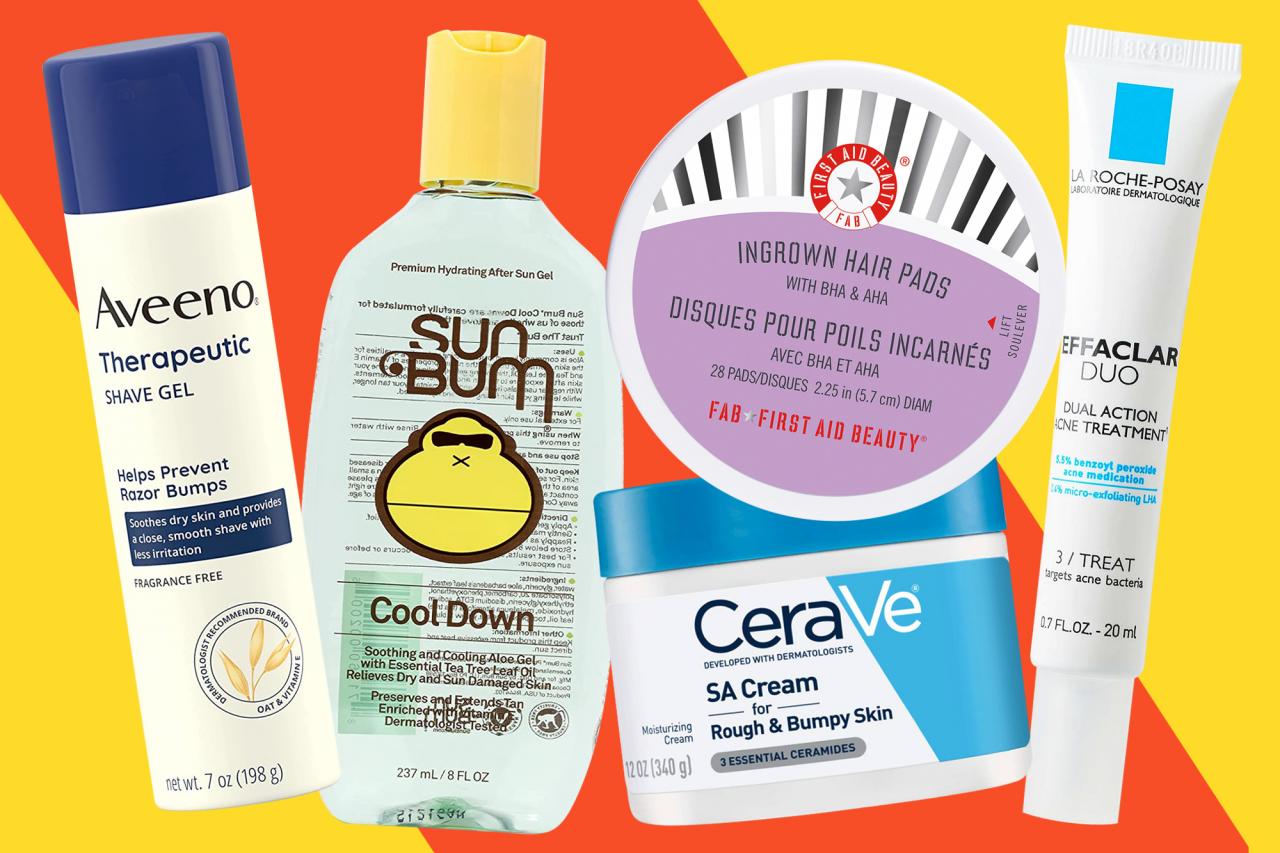Sleek, smooth skin is the goal for many when it comes to hair removal, but pesky razor burn and ingrown hairs can often derail that aspiration. These common skin irritations can leave us feeling frustrated and self-conscious. Fear not, as we have compiled a comprehensive guide on how to effectively treat razor burn and ingrown hairs, helping you achieve that flawless, bump-free complexion you desire. So, say goodbye to razor burn woes and ingrown hair nightmares – we’ve got you covered!

Understanding the Causes of Razor Burn and Ingrown Hairs
When it comes to dealing with razor burn and ingrown hairs, it’s important to understand the root causes of these pesky skin issues. Razor burn occurs when the skin is irritated by shaving, leading to redness, itchiness, and sometimes even small bumps. This can be caused by using a dull razor, shaving too quickly, or shaving against the grain. On the other hand, ingrown hairs happen when a hair curls back or grows sideways into the skin, causing inflammation and irritation.
To treat razor burn and ingrown hairs effectively, it’s crucial to address the underlying causes. Here are some tips to help you combat these common shaving problems:
- Use a sharp razor: Always make sure to use a sharp razor to prevent irritation and cuts.
- Shave in the direction of hair growth: Shaving against the grain can lead to razor burn and ingrown hairs, so be sure to shave in the same direction as your hair grows.
- Exfoliate regularly: Exfoliation helps to remove dead skin cells and prevent hairs from becoming trapped under the skin.
- Moisturize after shaving: Applying a hydrating lotion or aftershave can help soothe irritated skin and reduce inflammation.
Effective Home Remedies for Soothing Razor Burn
If you’re dealing with the irritation and discomfort of razor burn and ingrown hairs, there are several effective home remedies you can try to soothe your skin and promote healing.
Aloe Vera: Apply fresh aloe vera gel to the affected area to reduce inflammation and promote healing. Aloe vera has natural anti-inflammatory properties that can help soothe razor burn.
Coconut Oil: Coconut oil is a natural moisturizer that can help hydrate the skin and reduce irritation. Gently massage a small amount of coconut oil onto the affected area to help soothe razor burn.
Tea Tree Oil: Dilute tea tree oil with a carrier oil, such as coconut or olive oil, and apply it to the affected area to help reduce inflammation and prevent infection. Tea tree oil has natural antibacterial properties that can help heal razor burn.
Preventive Measures to Avoid Ingrown Hairs
When it comes to preventing ingrown hairs, there are several steps you can take to avoid this common skin issue. By following these preventive measures, you can minimize the chances of developing ingrown hairs and experiencing the discomfort that comes with them.
- Exfoliate Regularly: One of the best ways to prevent ingrown hairs is to exfoliate your skin regularly. By removing dead skin cells, you can prevent hairs from getting trapped beneath the surface.
- Use a Sharp Razor: Using a dull razor can increase the likelihood of ingrown hairs. Be sure to use a sharp razor and replace the blades regularly to prevent irritation.
- Avoid Tight Clothing: Tight clothing can rub against the skin and cause irritation, leading to ingrown hairs. Opt for loose-fitting clothing to reduce friction on your skin.
By incorporating these preventive measures into your skincare routine, you can take steps to avoid ingrown hairs and maintain smooth, healthy skin.
Professional Treatments for Severe Cases of Razor Burn and Ingrown Hairs
For severe cases of razor burn and ingrown hairs, professional treatments may be necessary to provide relief and prevent further irritation. Here are some options to consider:
- Laser Hair Removal: This treatment involves using targeted laser energy to destroy the hair follicles, reducing the chance of ingrown hairs.
- Chemical Peels: A chemical peel can help to exfoliate the skin, reducing the appearance of razor burn and promoting the healing process.
- Microdermabrasion: This treatment involves gently exfoliating the top layer of skin, helping to release ingrown hairs and improve the overall texture of the skin.
| Treatment | Benefits |
|---|---|
| Laser Hair Removal | Reduces ingrown hairs |
| Chemical Peels | Exfoliates skin |
| Microdermabrasion | Improves skin texture |
It’s important to consult with a dermatologist or skincare professional to determine the best course of treatment for your specific needs. They can provide personalized recommendations based on your skin type and the severity of your razor burn and ingrown hairs.
In conclusion, dealing with razor burn and ingrown hairs can be a frustrating and uncomfortable experience. However, by following the tips and techniques outlined in this article, you can help alleviate these issues and achieve smooth, healthy skin. Remember to be patient and consistent with your treatments, and always listen to your skin’s needs. With a little care and attention, you can say goodbye to razor burn and ingrown hairs for good. Here’s to happy, irritation-free shaving!

